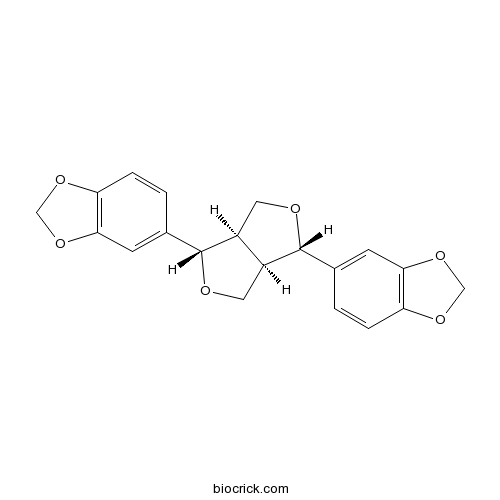Sesamum indicum
Sesamum indicum
1. The products in our compound library are selected from thousands of unique natural products; 2. It has the characteristics of diverse structure, diverse sources and wide coverage of activities; 3. Provide information on the activity of products from major journals, patents and research reports around the world, providing theoretical direction and research basis for further research and screening; 4. Free combination according to the type, source, target and disease of natural product; 5. The compound powder is placed in a covered tube and then discharged into a 10 x 10 cryostat; 6. Transport in ice pack or dry ice pack. Please store it at -20 °C as soon as possible after receiving the product, and use it as soon as possible after opening.
Natural products/compounds from Sesamum indicum
- Cat.No. Product Name CAS Number COA
-
BCN1289
Sesamolin526-07-8
Instructions

-
BCN4123
Sesamin607-80-7
Instructions

Genome-wide identification and comprehensive analysis of the NAC transcription factor family in Sesamum indicum.[Pubmed: 29927997]
The NAM, ATAF1/2, and CUC2 (NAC) family constitutes a large family of plant-specific transcription factors, involved in many aspects of physiological processes and a variety of abiotic stresses. There is little information concerning the NAC family in Sesamum indicum. In this study, 87 sesame NAC genes were identified and phylogenetically clustered into 12 groups with Arabidopsis NAC genes. A total of 83 SiNAC genes were distributed non-randomly on the 16 linkage groups in sesame. Four and 49 SiNACs were found to be tandemly and segmentally duplicated, respectively. Expression profiles of SiNAC genes in different tissues (root, stem, leaf, flower, seed, and capsule) and in response to drought and waterlogging stresses by using RNA-seq data demonstrated that 23 genes were highly expressed in all tissues, 18 and 31 SiNACs respond strongly to drought and waterlogging stresses, respectively. In addition, the expression of 30 SiNAC genes distributed in different subgroups was analyzed with quantitative real-time RT-PCR under cold, osmotic, and salt stresses, revealed that their expression patterns vary in response to abiotic stresses. SiNAC genes displayed diverse expression patterns among the different tissues and stress treatments, suggested that their contribution to plant growth and development in sesame and multiple stress resistance in sesame. In this study, NAC transcription factors were analyzed in sesame and some specific candidate SiNAC genes in response to abiotic stress for functional study were identified. This study provides valuable information to deepen our understanding of the abiotic stress responses by NAC transcription factors in sesame.
Genetic dissection and fine mapping of a novel dt gene associated with determinate growth habit in sesame.[Pubmed: 29902971]
As an important oil crop, growth habit of sesame (Sesamum indicum L.) is naturally indeterminate, which brings about asynchronous maturity of capsules and causes loss of yield.
Colorimetric LAMP microfluidic chip for detecting three allergens: peanut, sesame and soybean.[Pubmed: 29875429]
Food allergies can greatly harm people's health, and therefore detecting allergens in foods is extremely important. By integrating loop-mediated isothermal amplification (LAMP) with a microfluidic chip, we have developed a method for detecting the allergen genes of peanut (Arachis hypogaea), sesame (Sesamum indicum), and soybean (Glycine max) using a colorimetric method suitable for the naked eye, known as the colorimetric LAMP microfluidic chip. In the presence of peanut, sesame, or soybean in the samples, the corresponding reaction well of the microfluidic chip will appear pink, or otherwise remain light brown. This method of detection is specific and can easily distinguish these three allergens from others in foods. The detection limit for peanut, sesame and soybean allergens was 0.4 ng/μL using the LAMP-microfluidic chip. The accuracy of this novel and rapid method was validated using allergenic foods obtained commercially and was comparable with that of the typical TaqMan real-time PCR method.


